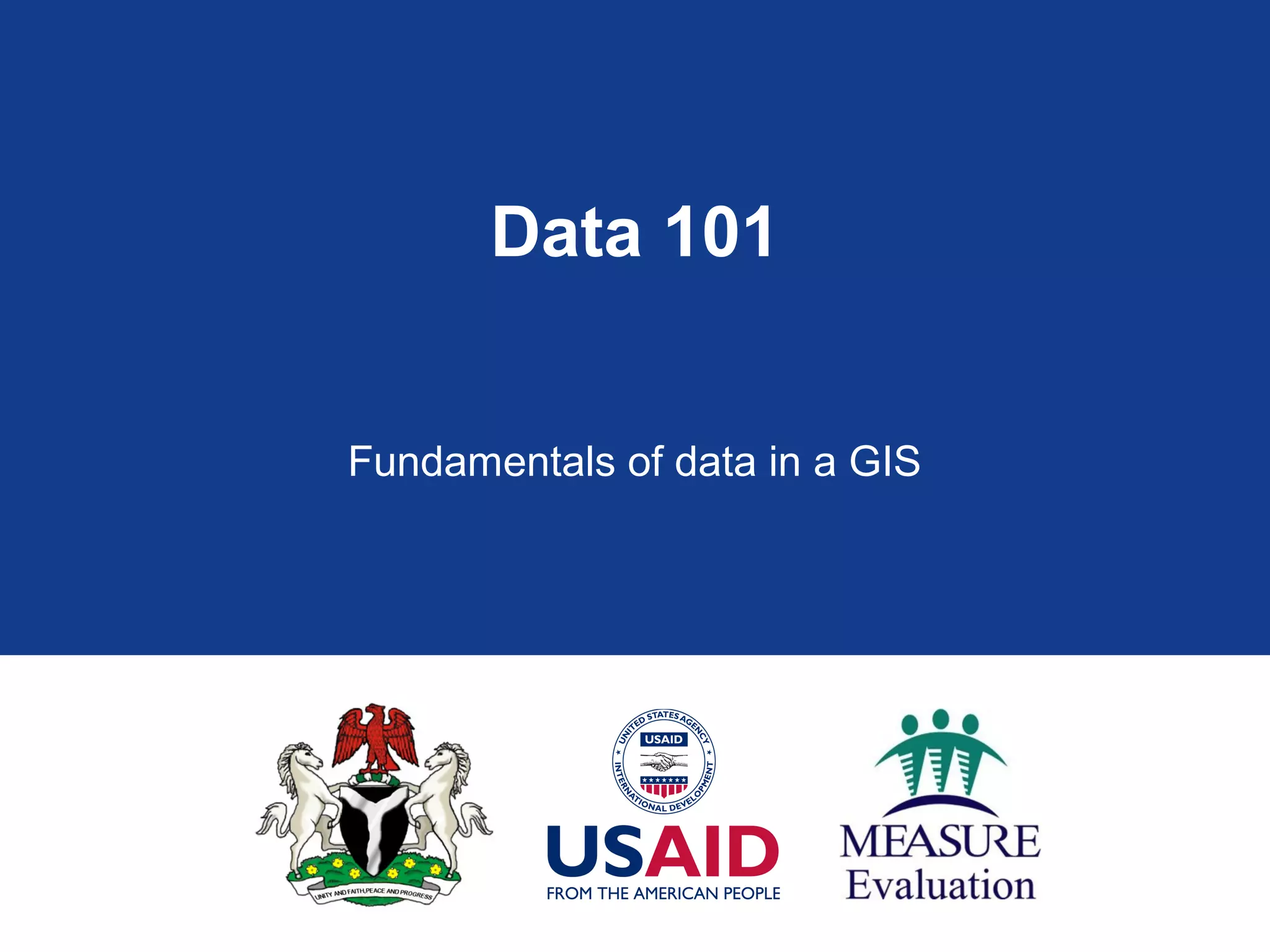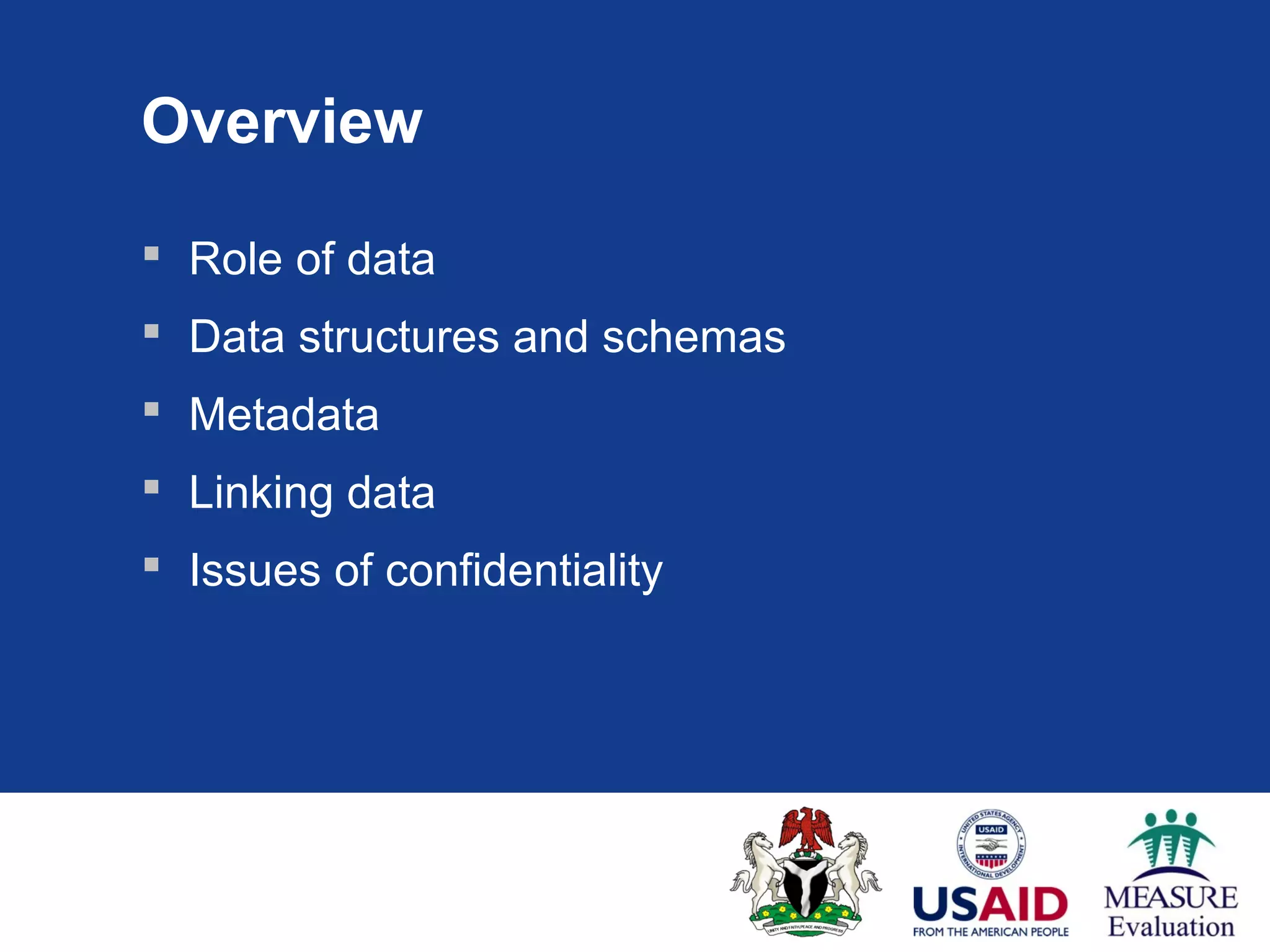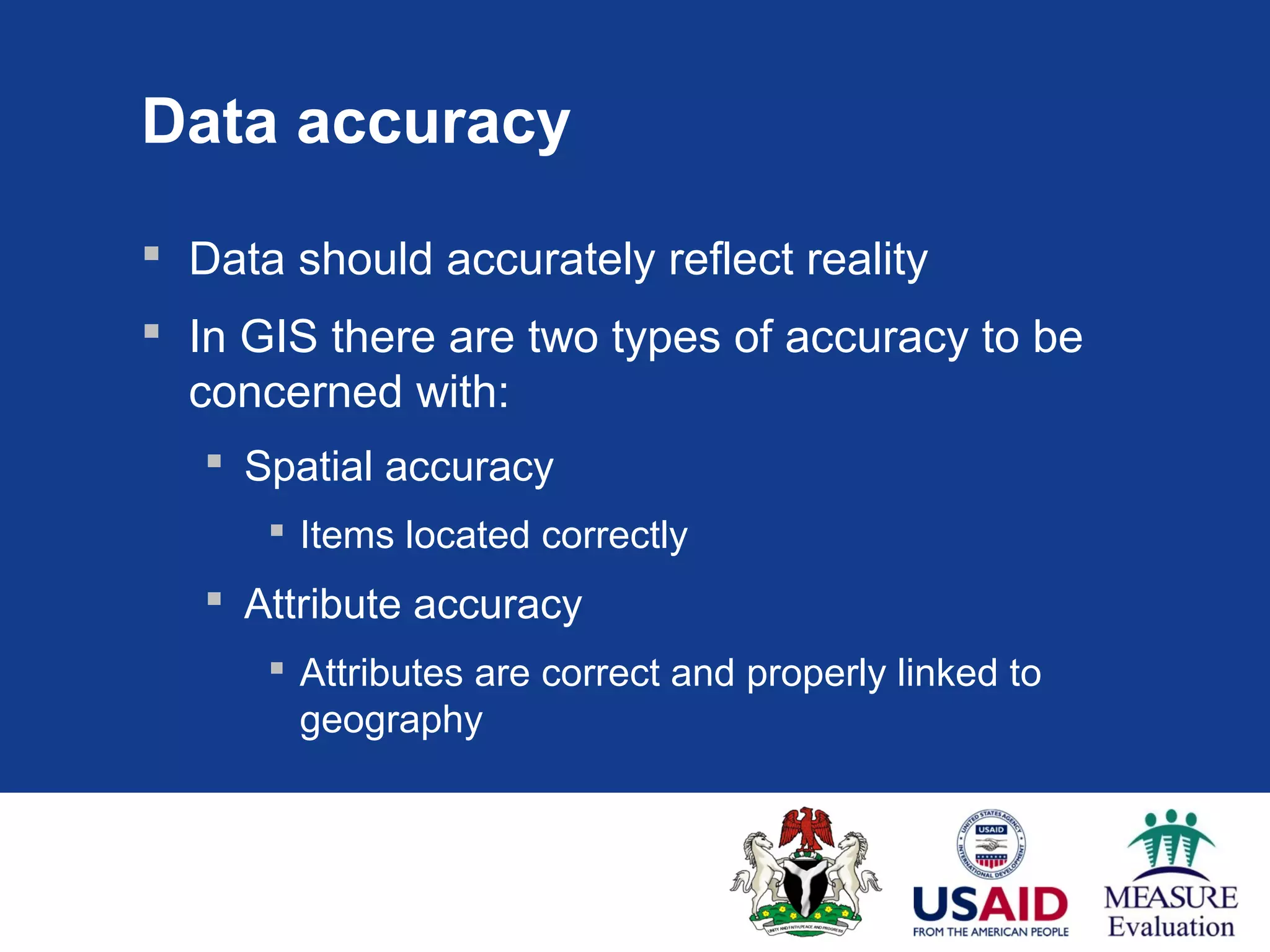This document discusses fundamentals of data in a GIS. It notes that 90% of time and effort in GIS projects is typically spent on data preparation. Good data structure, documentation (metadata), accuracy, timeliness, and linking of related data tables are important. Various strategies can be used to maintain confidentiality when sharing spatial data, such as aggregation, perturbation of locations, or removing coordinate systems. However, there is no single best approach, and ignoring confidentiality risks is unacceptable.





































![Geoprivacy
“[an] individual’s right to
prevent disclosure of the
location of one’s home,
workplace, daily activities
or trips.”
Protection of geoprivacy and accuracy
of Spatial Information: How Effective are
Geographical Masks?
Kwan, Casas, Schmitz
Cartographica, Vol 39, #2](https://image.slidesharecdn.com/presentation5-120912133525-phpapp02/75/Data-101-Fundamentals-of-Data-in-GIS-38-2048.jpg)













